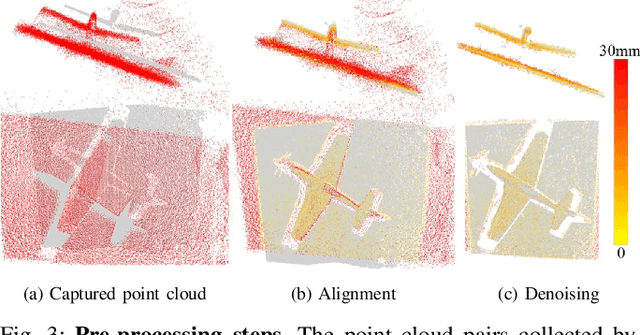Na Fan
Shape from Polarization for Complex Scenes in the Wild
Dec 21, 2021



Abstract:We present a new data-driven approach with physics-based priors to scene-level normal estimation from a single polarization image. Existing shape from polarization (SfP) works mainly focus on estimating the normal of a single object rather than complex scenes in the wild. A key barrier to high-quality scene-level SfP is the lack of real-world SfP data in complex scenes. Hence, we contribute the first real-world scene-level SfP dataset with paired input polarization images and ground-truth normal maps. Then we propose a learning-based framework with a multi-head self-attention module and viewing encoding, which is designed to handle increasing polarization ambiguities caused by complex materials and non-orthographic projection in scene-level SfP. Our trained model can be generalized to far-field outdoor scenes as the relationship between polarized light and surface normals is not affected by distance. Experimental results demonstrate that our approach significantly outperforms existing SfP models on two datasets. Our dataset and source code will be publicly available at \url{https://github.com/ChenyangLEI/sfp-wild}.
Joint Depth and Normal Estimation from Real-world Time-of-flight Raw Data
Aug 08, 2021



Abstract:We present a novel approach to joint depth and normal estimation for time-of-flight (ToF) sensors. Our model learns to predict the high-quality depth and normal maps jointly from ToF raw sensor data. To achieve this, we meticulously constructed the first large-scale dataset (named ToF-100) with paired raw ToF data and ground-truth high-resolution depth maps provided by an industrial depth camera. In addition, we also design a simple but effective framework for joint depth and normal estimation, applying a robust Chamfer loss via jittering to improve the performance of our model. Our experiments demonstrate that our proposed method can efficiently reconstruct high-resolution depth and normal maps and significantly outperforms state-of-the-art approaches. Our code and data will be available at \url{https://github.com/hkustVisionRr/JointlyDepthNormalEstimation}
Stereo Waterdrop Removal with Row-wise Dilated Attention
Aug 07, 2021



Abstract:Existing vision systems for autonomous driving or robots are sensitive to waterdrops adhered to windows or camera lenses. Most recent waterdrop removal approaches take a single image as input and often fail to recover the missing content behind waterdrops faithfully. Thus, we propose a learning-based model for waterdrop removal with stereo images. To better detect and remove waterdrops from stereo images, we propose a novel row-wise dilated attention module to enlarge attention's receptive field for effective information propagation between the two stereo images. In addition, we propose an attention consistency loss between the ground-truth disparity map and attention scores to enhance the left-right consistency in stereo images. Because of related datasets' unavailability, we collect a real-world dataset that contains stereo images with and without waterdrops. Extensive experiments on our dataset suggest that our model outperforms state-of-the-art methods both quantitatively and qualitatively. Our source code and the stereo waterdrop dataset are available at \href{https://github.com/VivianSZF/Stereo-Waterdrop-Removal}{https://github.com/VivianSZF/Stereo-Waterdrop-Removal}
 Add to Chrome
Add to Chrome Add to Firefox
Add to Firefox Add to Edge
Add to Edge